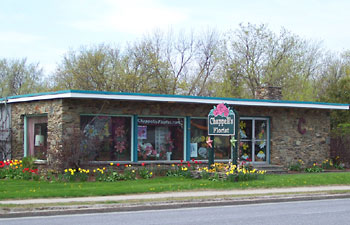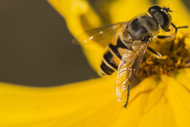How Buzzing Bees Bring Us Beautiful Flowers
21st Jun 2019
Which came first: bees or flowers? It might not be a question you’ve asked yourself before, but it’s something scientists have spent plenty of time exploring. After all, flowers need bees to survive, and bees need flowers to survive. They’ve evolved to be so tightly intertwined that you simply can’t have one without the other. So, did either of them survive without the other at some point in history? And if so, how?
Exploring this question will allow us to get some insight into the role that bees play in bringing us the beautiful flowers that we all love so dearly. As your trusted South Burlington florist, Chappell’s Florist wants to share our passion with all things flowers. So, let’s take a look at our little buzzing buddies and how they allow us all to enjoy the multi-sensory delights of flowers.
The Evolution Of The Flower
Can you imagine a world without flowers? It’s a sad thought, that’s for sure. But rewind the clock 140 million years, and you’d have a planet that had never known a single floral sight or scent. There were plenty of plants at this point (and dinosaurs!), since plants had evolved hundreds of millions of years beforehand — but still no flowers.
Similarly, while there were plenty of gigantic and nightmarish insects on the planet, there were no bees to be found. That is, until the early Cretaceous period. All of a sudden, flowers were everywhere! It’s not exactly clear why (Charles Darwin even described the sudden appearance of flowers in the fossil record as “an abominable mystery”), but once flowers had arrived, there was no slowing them down.
Flowering plants are called “angiosperms” and today they make up 9 out of every 10 plants on earth. They have certainly blossomed to become the most successful plant of our times. So, how can we account for the flourishing of our beloved flowers? The short answer: bees!
Pollinating Bees
Non-angiosperm plants rely on things like the wind to deliver their pollen. This is a highly inefficient way to reproduce since you’re at the vicissitudes of a chaotic and random process. The wind isn’t exactly invested in getting pollen to any particular destination. That’s like writing a letter to your beloved, tying it to a balloon, and letting it loose on a windy day. Not exactly good odds that your message would be received. Plants, therefore, would hugely benefit if they could develop a more directed and efficient delivery system for their pollen. And, as it so happens, evolution did exactly that!
Ancient insects were attracted to the pollen of early flowering plants. Before there was nectar, these insects developed a taste for the pollen, which would then allow them to spread the pollen to other flowers, acting as an effective germination method. Insects now had a reason to visit flowers, and flowers now had a reason to attract insects! This put evolutionary pressure on flowers to become brighter, more scented, and just generally more attractive to the insects.
This, then, is where nectar enters the scene. As flowers competed with each other to draw the attention of insects, they were pushed to develop alternate strategies. Nectar attracted even more insects, driving the diversity of these species. Ultimately, honey bees became particularly effective at seeking out nectar and spreading pollen. They’re basically optimized for flower-seeking and pollinating, doing it better than anything else on earth. They have ultraviolet vision to hone in on flower patterns that humans can’t even see, they have special hairs to collect huge amounts of pollen, and they have long tongues to slurp up plenty of nectar. Nothing finds and pollinates flowers better.
Chappell’s Florist In South Burlington
So, which came first, bees or flowers? Flowers did! But bees drove the diversity and beauty of flowers, and they’ve developed such an intimate connection that they’re now both completely contingent on the other. We lose bees, we lose flowers. So, next time you stop to smell the flowers, be sure to thank the bees that make it possible! And when you’re looking for that perfect floral arrangement for any occasion, let Chappell’s Florist in South Burlington help you find it!



